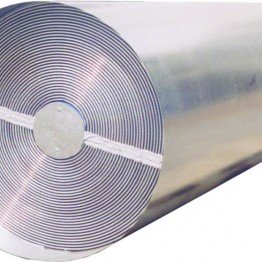BARTOSZ air-to-air type spiral heat exchanger is made from aluminium foil and galvanized sheet metal, which is spirally rolled and has the shape of a cylinder. The WS heat exchanger is structurally divided into two independent spaces: supply air section and exhaust air section. The precise sealing of both spaces ensures the separation of air, which makes the heat exchanger sealed and makes it possible to recover heat from exhaust air without mixing with supply air. With a view to meet high market requirements in the best possible way, we have created a mechanical ventilation system with heat recovery, ensuring optimum air parameters, while managing to maintain low level of energy consumption. Using the patented air-to-air type heat exchanger (Protection law 61570) our air handling systems and units reach very high efficiency.
The spiral design of the heat exchanger and distribution solutions make the air flows arch-wise, in the counter flow and at the same time partly in the cross flow way. This, along with the suitable membranes area, ensures the heat exchanger to reach the highest efficiency (85-92%) available on the market and this is applicable to the full range of temperatures outside. This means that when the temperature on the outside falls to -20°C and the temperature of the exhaust air is +20°C, the air entering the premises will be at the temperature of approx. 14°C. The role of the central heating system will be to heat the air indoors by only several, and not several dozen degrees, as it is in the case of traditional ventilation systems without heat recovery. This will result in lower heating bills. The heat exchanger’s resistance to frosting means, in turn, that the use of heaters or defrosting options is not required and thus, there are no additional operating cost. The parameters achieved by the heat exchanger have been documented by the Department of Heat Engineering of the Bialystok University of Technology (Polish: Politechnika Białostocka) and confirmed by separate studies at the AGH University of Science and Technology in Cracow.




